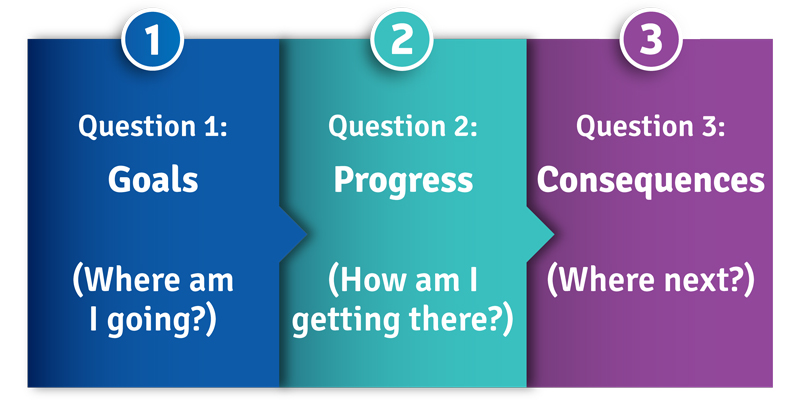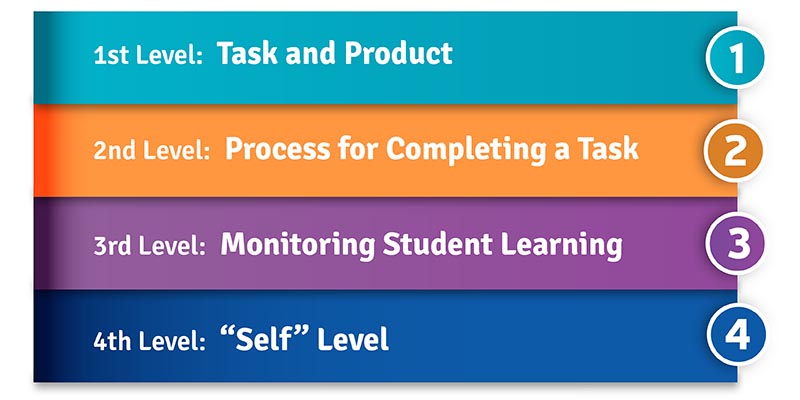In my last post, Teacher Clarity, I promised to take a closer look at the different components of teacher clarity and various methods for providing feedback, along with other high effect-size practices that positively impact student achievement. Much of what I share here comes from John Hattie’s book, Visible Learning for Teachers.
Hattie points out that the aim of feedback is reducing the gap between students’ current abilities and learning goals. With an effect size of .79, the practice of giving students feedback enhances successful learning through all phases of instruction. Feedback achieves great results especially when students make errors or demonstrate a lack of understanding, presenting an opportunity for deeper learning and positive growth.
Students need to know how they’re performing, but feedback can accomplish this goal in many different ways. Some forms of feedback are more beneficial than others, and the optimal time for offering specific feedback should be directly based on each student’s place in the learning process.
Feedback should be personalized and directed toward one student or a small group of students. A study by David Carless (2006) found that most teacher-delivered feedback is directed to the whole class. In these cases, student often don’t listen to or make use of the feedback because they don’t think it applies to them.
Several other studies cited in Hattie’s book suggest that students find teacher feedback less valuable than teachers perceive it to be, often because it’s difficult to understand, confusing, and/or irrelevant. According to these studies, teachers tend to rate their feedback based on the quantity (amount and frequency of feedback) rather than quality (feedback specific to and understood by the learner).

According to Hattie, effective feedback addresses three important questions and operates on four levels. Let’s first look at the questions.
Question 1: Goals (Where am I going?)
- Many students are unable to state the goal of a lesson.
- Teachers need to explain the learning objectives of each lesson and communicate what success looks like, then check for student understanding of these learning expectations.
- Too often, students think the goal is strictly performance-related: complete the assigned task, make it neat, pass the test, etc. instead of mastering the skill or understanding the concept.
- Feedback on goal comprehension is important. Students who understand goals are more likely to seek further feedback.
Question 2: Progress (How am I getting there?)
- This feedback encourages students to own their learning.
- It clarifies learning objectives and criteria for success, fostering effective classroom discussions and questioning.
- This type of feedback drives the learner toward mastery and understanding.
Question 3: Consequences (Where next?)
- This feedback helps students determine the next appropriate challenges.
- It reveals different strategies that can be used to accomplish tasks and derive deeper understanding.
- It guides them to seek more information to answer questions about what is not understood.

Next, let’s look at levels of feedback. The levels correspond to the different stages of learning, from beginning stages through to competency or mastery.
First level of feedback: the task and product level
- This type of feedback is information-focused and should lead to acquiring more and/or different information, as well as building surface knowledge.
- Examples of feedback at this level include:
- whether the student’s response was right or wrong
- whether a response needs elaboration or revision
- whether more information is needed
- guidance on building more task knowledge
Second level of feedback: the process for completing a task
- This kind of feedback helps learners detect what they might be doing wrong and what alternative strategies or approaches might correct an error or lead to a better outcome.
- This feedback should lead to deeper understanding.
Third level of feedback: monitoring student learning
- This feedback helps students resolve the conflict between where they are in their learning tasks and the desired outcomes and intended successes.
- Examples can include asking students what else they think they could do to improve an outcome, asking them to explain why they think they got an answer wrong, or asking them to seek alternative methods for achieving a specific goal.
Fourth level of feedback: the “self” level
- This level of feedback addresses praise. Praise should not be used to dilute the power of feedback on a given learning process or task.
- While praise is important, it should be kept separate from feedback that improves the learning process.
- Praise may comfort and support a student, but it does not provide task-related information, nor does it result in more commitment to the learning objective.
- While praise does have value in certain contexts, Hattie cites studies that show praise has a low effect size, hovering around .1.
Providing constructive feedback to individual students, encouraging them to engage in and reflect upon the learning process, leads to positive learning outcomes and achieves results. How the feedback is given matters more than how much feedback is given.
Focused, specific feedback helps students understand learning objectives, choose the best strategies for the task, make course corrections throughout the learning process, monitor their own learning, and determine where to go next.
When combined, effective feedback (with its .79 effect size) and teacher clarity (with its .75 effect size) lead to greater student achievement. These two valuable practices are well worth the effort they require from teachers.


